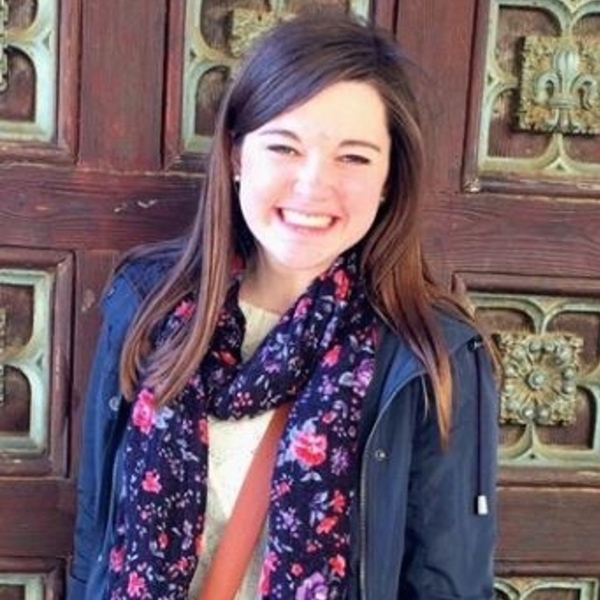I’d like to begin with a list that quickly becomes a confession: the library, a generous amount of independent bookstores, countless tea shops, the corner grocery store, an art museum, my university flat, the chapel, a handful of pubs, a vast variety of European public transit vehicles. This is a non-exhaustive list of places in England with doors that I have not known how to open and have subsequently attempted to open incorrectly, much to my repeated embarrassment.
I am studying abroad this semester in Norwich, England, which has meant that the past month has brought its fair share of nuanced cultural differences into my life. This adjustment period has meant that I have often felt substantially less adept at what I would consider to usually be completely basic tasks. Mailing a letter, shopping for groceries, crossing the street, plugging my computer charger into a wall outlet: simple activities that I could once rely completely on my own instincts to accomplish, that now, across the pond, take little moments of extra thought and sometimes even assistance.
One area in which my own instincts have strikingly failed me is the act of opening doors: I seriously cannot get a handle on the whole opening of doors thing here. When a door ought to be pushed, I eagerly pull. Then, a following day, having learned from my mistakes, I confidently pull—only noting after, to my chagrin, a helpful sign reading “Push.” I stood awkwardly in the rain outside my university’s library utterly flummoxed by a handle-less door, not having picked up on the fact that I needed to swipe my ID card to enter. I never can jiggle my room key into the lock exactly right on the first try. I completely avoided most on-campus eateries my first week because I couldn’t understand when to press the automatic door button and when to just walk on through. And so it happened (and still happens) day after day: I would stroll up confidently to a tea shop, ready to make my “big entrance” with style and ease, only to sputter uncomfortably at the entrance in a number of failed door pushing and pulling maneuvers.
When Tim O’Malley first thoughtfully proposed the idea of a series on doors of mercy during my time abroad, my pre-departure self immediately began daydreaming of all the beautiful and holy doors that I would find and describe, in a series of effortless study abroad spiritual experiences that I would soon “accomplish.” And so, when the reality of my encounters with doors this first month unfolded comically as anything but effortless, I began to think of myself as hardly qualified to contribute any door-related musings to the blogosphere.
At Mass on the First Sunday of Lent, as a sort of last-ditch attempt, I found myself grabbing a little pamphlet entitled “The Holy Doors,” one leaflet amidst many sets of brochures and informational materials pertaining to the Year of Mercy. Given my aforementioned newfound inability to open doors properly, my heart was immediately drawn to the simple repetition of the word “opened.” The little church pamphlet was incredibly aware of this gift of each and every Holy Door as having already been opened. As the pamphlet detailed how all Catholics are invited to make trips to pass through a Holy Door in their diocese, I couldn’t help imagining what this pamphlet would be like if this gift of openness was not present:
All Catholics are invited to make trips to pass through a Holy Door, to test their strength and discover whether or not they can push open the door.All Catholics are invited to make trips to pass through a Holy Door, and if they have the right form of ID on them, may be permitted to use swipe-access to cross the threshold.
All Catholics are invited to make trips to pass through a Holy Door, and if they know how to correctly jiggle the key in the lock, then they are invited to encounter God’s merciful love.
But the gift of openness was present, and in abundance. Again and again the pamphlet detailed this gift. As in, the Holy Door at St. Peter’s has been opened. The Holy Door of the Basilica of St. John Lateran has been opened. Holy Doors all across Rome have been opened. Doors of Mercy in basilicas and shrines in every area of the world have all been opened, not on account of how good we are at pushing or pulling them with our own strength, but rather, on account of our Father who has opened his heart mercifully to us.
Thinking of doors primarily as something I open and through which I “make an entrance” rendered me unable to encounter the Door of Mercy as the space in which God’s first movement of openness makes it possible for me to enter into his merciful embrace. Thankfully, this is a divine openness which is not at all enacted by the strength of my own pushing and pulling. Christ has opened wide the door to his Father’s merciful love, and by crossing the threshold of the Holy Door, we remember the great gift that is the fact that this door has already been opened for us. Passing through the wide open door is what allows us to open wide our hearts mercifully to others: a loving and forgiving embrace that does not demand of the other a proper ID card, a strong push or pull, or the fickle jiggling of a key in a lock. Open doors instruct us in the art of open hearts, and so this series will be the unfolding of that much-needed instruction in my own heart this semester.
Madeline Lewis is an Undergraduate Fellow of the Notre Dame Center for Liturgy and a junior theology and English major at the University of Notre Dame.

